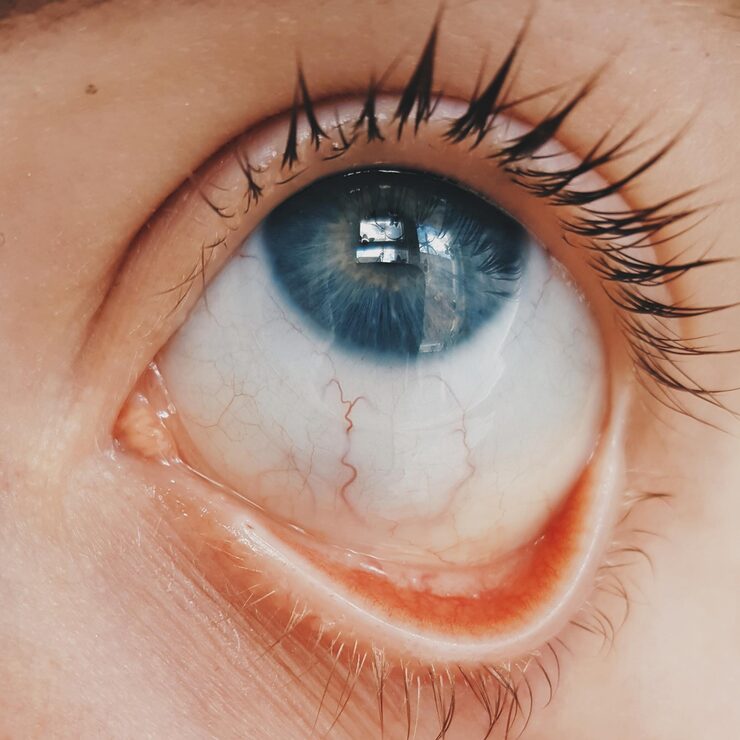Dry eye syndrome is one of the most common eye conditions today, especially in people who spend long hours on digital screens or in air-conditioned environments. Healthy eyes are covered by a protective tear film, which keeps them lubricated, nourished, and free from dust and harmful bacteria. When this tear film becomes unstable—either due to reduced tear production or faster tear evaporation—dry eye symptoms appear.
What Causes Dry Eyes?
Several factors can affect tear quality or quantity:
- Ageing: Tear production naturally decreases as we grow older.
- Hormonal changes: More common in postmenopausal women.
- Medications: Antihistamines, antidepressants, beta-blockers, and oral contraceptives may reduce tear production.
- Autoimmune conditions: Disorders like Sjögren’s syndrome damage the tear and salivary glands, leading to severe dryness.
- Eyelid conditions: Problems such as blepharitis, meibomian gland dysfunction, or rosacea affect the oily layer of the tear film, causing rapid evaporation.
- Reduced blinking: Screen use, reading, or TV watching lowers blink rate, allowing tears to evaporate quickly.
- Incomplete eyelid closure: Conditions such as thyroid eye disease, Bell’s Palsy, or stroke may prevent proper blinking.
Environmental factors like dust, wind, dry climates, heating, and air conditioning can also worsen symptoms.
Common Symptoms of Dry Eye
Dry eye symptoms vary from person to person, often worsening as the day progresses. You may experience:
- Dryness, grittiness, or burning
- Red or tired eyes
- Sensitivity to light
- Blurred or fluctuating vision
- Excessive watering (a reflex response to dryness)
- Stringy mucus around the eyes (often noticed on waking)
How is Dry Eye Diagnosed?
An eye specialist can usually diagnose dry eye through a combination of symptom history and clinical examination. Tests may include:
- Slit-lamp examination: To check for inflammation or eyelid issues.
- Fluorescein dye test: Highlights dry or damaged areas on the eye surface.
- Schirmer’s test: Measures tear production using a small strip of paper placed inside the eyelid.
Treatment Options for Dry Eye
Although dry eye cannot usually be cured, treatments can relieve discomfort and prevent complications:
- Artificial tears & lubricating gels: Provide temporary relief by keeping eyes moist.
- Punctal plugs or cautery: Block tear drainage to keep natural tears on the eye longer.
- Treating underlying conditions: Managing blepharitis, meibomian gland disease, or autoimmune conditions improves long-term outcomes.
In severe cases, untreated dry eye can increase the risk of infections, corneal ulcers, or vision damage—making early management essential.
Self-Care Tips for Managing Dry Eye at Home
Simple lifestyle adjustments can significantly reduce discomfort:
- Stay hydrated and maintain a balanced diet.
- Take regular screen breaks and practice conscious blinking.
- Use humidifiers or bowls of water indoors to increase air moisture.
- Avoid sitting under direct fans or AC vents.
- Wear protective eyewear in windy or dusty conditions.
- Ask your eye specialist about contact lens alternatives if lenses worsen symptoms.
FAQs
Q: Why do my eyes water if I have dry eye?
A: When eyes are irritated, they produce reflex tears, which are watery and lack the essential oils needed for proper lubrication—causing ongoing dryness.
Q: Which artificial tears should I use?
A: There are different types available. It’s best to try a few and see which provides the most relief, or ask your ophthalmologist for guidance.
Dry eye may be uncomfortable, but it is highly manageable with the right care, lifestyle changes, and professional treatment. If you experience persistent symptoms, book an eye check-up with an ophthalmologist to protect your vision and comfort.


